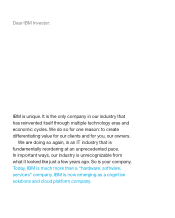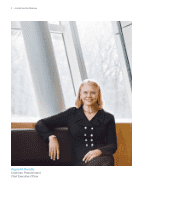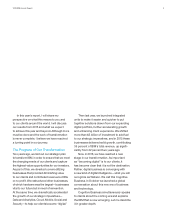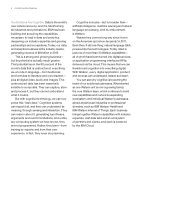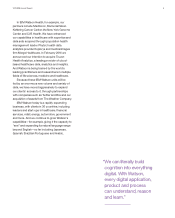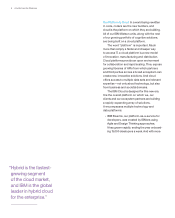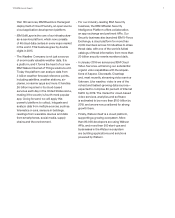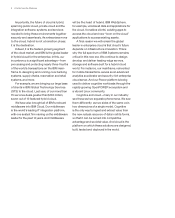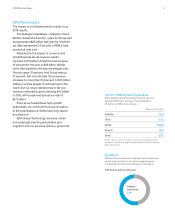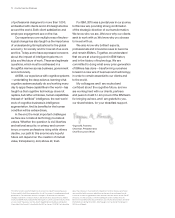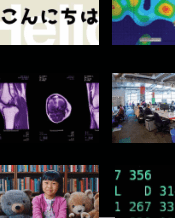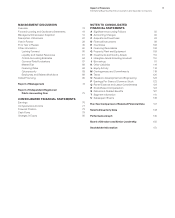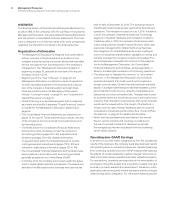IBM 2015 Annual Report Download - page 10
Download and view the complete annual report
Please find page 10 of the 2015 IBM annual report below. You can navigate through the pages in the report by either clicking on the pages listed below, or by using the keyword search tool below to find specific information within the annual report.8 A Letter from the Chairman
will be the heart of hybrid. IBM WebSphere,
for example, unlocks all data and applications for
the cloud. It enables clients’ existing apps to
access the cloud and new “born on the cloud”
applications to access existing assets.
A fi nal reason we will remain the global
leader in enterprise cloud is that cloud’s future
depends on infrastructure innovation. This is
why the full spectrum of IBM Systems remains
critical in this new era. We continue to design,
develop and deliver leading-edge servers,
storage and software built for a hybrid cloud
world. For instance, our mainframe, reinvented
for mobile transactions, serves as an advanced
analytics accelerator and security-rich enterprise
cloud server. And our Power platform is being
used to deliver cognitive workloads through the
rapidly growing OpenPOWER ecosystem and
a vibrant Linux community.
Cognitive and cloud—many in our industry
see these as two separate phenomena. We see
them differently: as two sides of the same coin,
two dimensions of a single model. Cognitive
is the only way to ingest and extract value from
the new natural resource of data in all its forms,
so that it can be turned into competitive
advantage and societal value. And cloud is the
platform on which these solutions are designed,
built, tested and deployed in the world.
Importantly, the future of cloud is hybrid,
spanning public cloud, private cloud and the
integration software, systems and services
needed to bring these environments together
securely and seamlessly. As enterprises move
to the cloud, hybrid is not a transition phase;
it is the destination.
Indeed, it is the fastest-growing segment
of the cloud market, and IBM is the global leader
in hybrid cloud for the enterprise. In this, our
incumbency is a signifi cant advantage—from
processing and protecting nearly three-fourths
of the world’s transactions on the IBM main-
frame to designing and running core banking
systems, supply chains, reservation and retail
systems, and more.
For example, we are bringing our large base
of clients in IBM Global Technology Services
(GTS) to the cloud. Last year, of our more than
70 services deals greater than $100million,
seven out of 10 featured hybrid cloud.
We have also brought all of IBM’s relevant
middleware into IBM Cloud. Our middleware
is the world’s leading IT integration platform,
with one analyst fi rm naming us the middleware
leader for the past 14 years. And middleware



